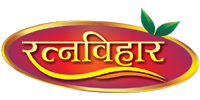During its brief season the Alphonso mango becomes something of a national obsession in India As anyone who’s tasted an Alphonso mango knows, its short season, from now until the end of June, is a major cause for celebration. Often making an appearance on “1,000 things to eat before you die”-type lists, this Indian variety has become more and more popular in the UK. It’s easy to see why. Alphonso’s voluptuous shape and sunshine-yellow skin reveals succulent saffron-coloured flesh that’s smooth and buttery: imagine a cross between peach, nectarine, apricot and melon with notes of honey and citrus. But better. Alphonso has captured the imagination of chefs like Richard Corrigan, Yotam Ottolenghi, Vivek Singh and Peter Gordon. You’ll find it on the dessert and cocktail menus of an increasing number of restaurants and bars around the country. London’s Cinnamon Club make mango and cardamom crème brulee. The Milsom group in Suffolk and Essex favour panna cotta, cheesecake and sweet salsas. Chef Dev Biswal of The Ambrette in Rye and Margate slices them thin, “almost the thickness of a carpaccio” and serves them with ice cream made from the pulp. Chocolatier Paul A Young has been selling limited edition “Alphonso mango and Bloomsbury prairie fire chilli” truffles and this year’s MasterChef winner Shelina Permalloo, who became renowned for her love of mangoes, always uses Alphonsos. Alphonso is named after Afonso de Albuquerque, a nobleman and military expert who helped establish the Portuguese colony in India. It was the Portuguese who introduced grafting on mango trees to produce extraordinary varieties like Alphonso. The fruit was then introduced to the Konkan region in Maharashtra, Gujarat and parts of south India. Of the thousands of cultivars of mango in India, there are several different varieties of Alphonso. The best and most expensive are grown on the small Natwarlal plantation in Ratnagiri, and are hand-harvested. It is this variety that’s most widely exported. The fruit was shipped to London for the Queen’s coronation in 1953 from Mumbai’s legendary Crawford Market, renowned for its Alphonso stalls in season, which is when our own love affair with it must have begun. A national obsession in India on a par with Bollywood and cricket, the start of the mango season signals the beginning of summer and makes headlines. Newspapers give continuous updates on prices and availability. It’s customary to send boxes of Alphonso mangoes to friends, colleagues and bosses as a mark of love and respect; and many courier companies in India even offer a separate mango delivery service. Many Indians eat little more than the fruit for breakfast, lunch and dinner during its short season. In Mumbai, top restaurants put on mango festivals, and street vendors sell freshly squeezed mango juice. Indians celebrate with “mango parties”, using the fruit in dishes such as pakoras, curries, mango leather, drinks like lassi and falooda, sweetmeats like barfi and desserts such as shrikhand. Perhaps the most popular way of eating Alphonso is pulped, thickened with milk or cream, into which puris (deep-fried discs of puffed bread) are dunked. They are often available in large supermarkets and excellent online retailers like Natoora, but are cheaper from Asian greengrocers. Spring brings many delicious things to eat – rhubarb, asparagus, wild garlicand the first broad beans. For me though, nothing beats the Alphonso mango.
Do you know Alphonso mango?

23
Feb
